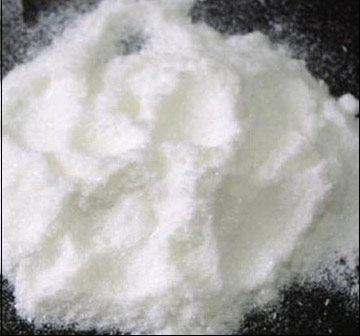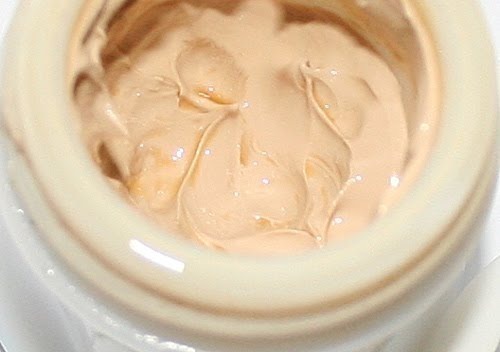Acesulfame potassium (Acesulfame K or Ace K, where “K” is the elemental symbol for potassium) is commonly used as an artificial sweetener or flavor enhancer. It is used in low calorie food products as it replaces sugar and other natural sweeteners that commonly add large amounts of calories.
Acesulfame potassium’s trade names include “Sunett” and “Sweet One” and has the additive code E950 in the European Union. It looks like a white crystalline powder when pure. Acesulfame potassium’s chemical formula is C4H4KNO4S and is technically a potassium salt.
Why is Acesulfame Potassium Used?
Acesulfame potassium can be 200 times as sweet as table sugar. It is just as sweet as other artificial sweeteners such as aspartame, 75% as sweet as sucralose and half as sweet as saccharin. This opens up many possibilities for acesulfame potassium’s use as an artificial sweetener in various products. Like saccharin, when a large amount of acesulfame potassium is used, there is a slightly bitter aftertaste. When used in combination with sodium ferulate, acesulfame potassium’s bitterness can be controlled and masked. Acesulfame potassium is commonly blended with other artificial sweeteners and sugar to produce sweeter and much better tasting compounds.
The major difference between acesulfame potassium and other artificial sweeteners is that it remains stable when used in high heat applications. Sweeteners such as aspartame are less stable and unsuitable for baking. This means that acesulfame potassium can also be used in products with a longer shelf life because it is less likely to destabilize during storage. Acesulfame potassium is also very useful as an additive in medication that must be chewed or consumed in liquid form as it gives a more pleasant flavor to active ingredients in medicine.
How Acesulfame Potassium was Developed
Karl Clauss and Harald Jensen discovered a compound that is very similar to acesulfame potassium in 1967. This compound was known as 5,6-dimethyl-1,2,3-oxathiazin-4(3H)-one 2,2-dioxide. Clauss’s discovery was accidental as he did not take proper care in cleaning his hands during work, licked his fingers to pick up a piece of paper, and noticed a strong sweet flavor. After experimenting with this chemical compound further, 6-methyl-1,2,3-oxathiazine-4(3H)-one 2,2-dioxide was chosen as the most favorable. The World Health Organization named the compound acesulfame potassium in 1978.
Acesulfame Potassium Safety
Like other artificial sweeteners, acesulfame potassium’s long term side effects in humans is a concern, although the compound has had approval for some time. Acesulfame potassium’s dietary safety is still unregulated, but the Food and Drug Administration in the United States and equivalent agencies in the European Union have approved it.
Animal Testing of Acesulfame Potassium
It is common to use animals to test substances because many animals are sensitive to diet and environmental changes. Although animal testing is useful, it yields very little usable data that apply to humans due to the vast differences in human and animal physiology.
According to tests, rodents do not grow tumors when they consume acesulfame potassium in food. In an experiment, rodents were given very large doses, equivalent to more than 1000 cans of artificially sweetened carbonated beverages every day for 40 weeks. This was only 3% of the rodents’ total diet and did not result in any increase in the risk of cancer or neoplasm conditions in the rodents.
In a similar rodent study, rodents that were given varying amounts of acesulfame potassium had an increase in insulin production. Although more insulin production was observed, the rodents did not show any signs of hypoglycemia (low blood glucose levels) or any significant risk. Doses were extremely excessive compared to what humans would possibly consume in a single day.
Acesulfame Potassium Benefits
All research regarding whether any severe problems could be tied to acesulfame potassium as an artificial sweetener are inconclusive. By using acesulfame potassium, the following can be achieved:
Lower Calorie Food Production – The human body does not metabolize acesulfame potassium. Acesulfame potassium is processed outside the body and calories are removed at that point. Therefore, calories in foods can be significantly lowered if the substance, instead of sugars, is used in foods.
Chemical Preservation – Artificial sweeteners may not be useful in products that will be stored due to their instability under high temperatures. Since acesulfame potassium can withstand very high temperatures, it can be used in baking and contributes to product safety in processes such as pasteurization and moisture reduction through heating.
Product Shelf Life – Acesulfame potassium does not ferment since bacteria and other microbes cannot consume it. This lowers contaminant production without the products losing sweetness. Acesulfame potassium’s stability also makes it good for products that have varying pH and other factors that are not suitable for other artificial sweeteners or even some natural sweeteners.
Excellent Flavor – Since acesulfame potassium is only slightly bitter, it sweetens without an aftertaste. The sweetener’s flavor does not linger and can actually provide a natural flavor, which is enjoyable. Acesulfame potassium can also be sweeter when used with other artificial sweeteners.
Tooth Friendly – Since bacteria do not consume acesulfame potassium, especially in the mouth, acesulfame potassium does not promote tooth decay. It is a useful substitute in candies, desserts, etc. Acesulfame potassium is an ingredient in some toothpastes, flossing materials, and mouthwashes as it gives them a sweet flavor without causing tooth decay.
Diabetic Benefit – Acesulfame potassium helps manage blood glucose levels in both Diabetes types when used instead of natural sugars. Studies have shown that acesulfame potassium does not affect serum glucose increases and does not contribute to cholesterol or triglyceride increase.
How Acesulfame Potassium is used in Consumable Products
Since acesulfame potassium is considered safe for consumption, it can be placed in a variety of products with minimal worry of side effects or potential damage to humans. Acesulfame potassium’s use is becoming more commonplace worldwide as the substance becomes less expensive.
List of Common Products that May Contain Acesulfame Potassium:
- Carbonated Beverages
- Non-Carbonated Beverages
- Fruit Juices
- Beverage Concentrates
- Alcoholic beverages
- Tabletop Sweeteners
- Dairy Products
- Ice Cream
- Desserts
- Gelatin
- Fruit and Vegetable Preserves
- Jam, Jelly and Marmalade
- Baked Goods
- Confectionery
- Chewing Gum
- Marinated Fish
- Toothpaste and Mouthwash
- Pharmaceuticals
- Yogurt
- Milk products
- Breakfast cereals
- Processed fruits and vegetables
- Salad dressings and sauces
- Condiments and relishes
- Snack foods
- Soups
- Vitamins
Even products that are not made for consumption may contain acesulfame potassium. Acesulfame potassium’s versatility provides many uses as consumers can also use it to cook.




Girish Sisodiya
Can u give me reaction of acesulfame k or 6-methyl – 1,2,3 – oxathiazin – 4(3H)-one 2,2 – dioxide .
If u have that plese give me details.
William Fraser
once ingested intot he human body, what is the half-life of acesulfame?